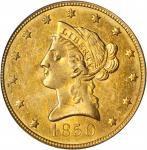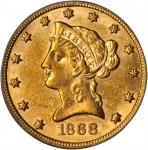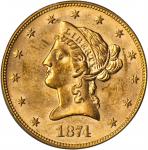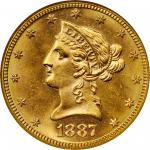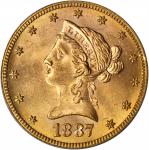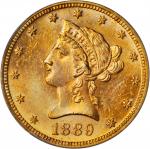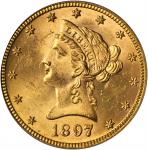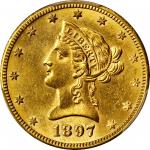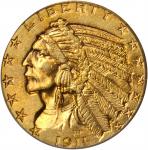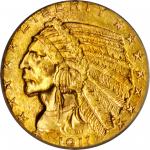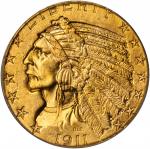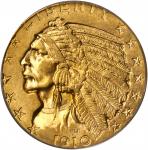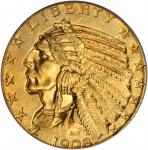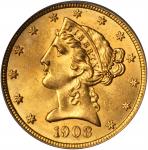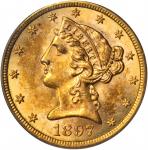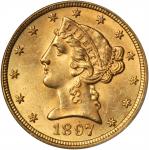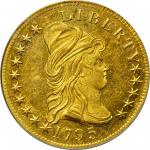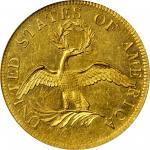1795年右向鹰金币 PCGS MS 62
1795 Capped Bust Right Eagle. BD-1, Taraszka-1. Rarity-3+. 13 Leaves. MS-62 (PCGS).
This is a beautiful example of a classic eagle rarity from the earliest years of U.S. Mint coinage. Both sides exhibit bold medium gold patina with full prooflike finish remaining. The fields are noticeably reflective and form a nice backdrop to satiny devices. Sharply defined apart from a touch of trivial softness to the obverse stars and the high points of the eagle on the reverse. This is a solidly graded Mint State example with equally strong technical quality and eye appeal.
When the Mint Act of April 2, 1792, was passed, the gold eagle or $10 coin was adopted as the United States' highest denomination. Because of this, when the $20 became a reality in 1849 it was called the double eagle. As a symbol of the nation's ability to strike gold coins, however, the eagle had no equal during its early years. It was a large coin, measuring approximately 33 millimeters, and it weighed a relatively substantial 17.50 grams. There must have been considerable fanfare at the Mint when the first examples emerged from the presses, being that it was one of then-Mint Director Henry William DeSaussure's stated objectives to place gold into circulation. Although he accomplished this feat with the half eagle, coinage of which commenced earlier, the arrival of the first of the impressive eagles almost certainly pleased him.
The Capped Bust Right, Small Eagle design engraved by Robert Scot is the first eagle struck by the United States Mint, and it is a rare and beautiful type. The reverse is particularly elegant, with the tips of the eagle's wings intruding into the lettering. The motif is said to have been copied from an ancient cameo, perhaps explaining the use of a palm branch, otherwise unusual. The total mintage for this type is believed to have been fewer than 15,000 pieces, spread across several different dates (1795 to 1797) and varieties. Although it is likely that some pieces circulated in commerce in the 1790s, as this was an era of abundant gold and silver, afterward many (if not most) were exported and melted. Indeed, the exportation of eagles and the subsequent loss of gold had become so great by the earliest years of the 19th century that President Thomas Jefferson halted production of this denomination in 1804. Coinage did not resume until 1838, the intervening years seeing the half eagle as the highest denomination U.S. coin.
Today, any early eagle is scarce, and many varieties are quite rare. The mintage of 1795-dated examples is somewhere on the order of 5,583 pieces. BD-1, offered here, is believed to have been the first eagle variety produced, and is the most frequently encountered of the five known die marriages of the date. In an absolute sense, of course, survivors are scarce and probably number no more than 325 or 350 coins in all grades. In Mint State the Capped Bust Right, Small Eagle $10 as a type is rare, especially when compared to the demand for them in today's market. This is a particularly appealing coin for the assigned grade that will please even the most discerning numismatist.
PCGS# 8551. NGC ID: 25ZT.
PCGS Population (all die marriages of the 13 Leaves variety): 17; 16 finer (MS-66+ finest).
Provenance: From the A.J. Vanderbilt Collection. Earlier from our (Stack's) sale of the Samuel W. Wolfson Collection, Part I, October 1962, lot 617; our (American Auction Association's/Bowers and Ruddy's) Scott Collection sale, June 1975, lot 1109. Bowers and Ruddy lot tag included.





